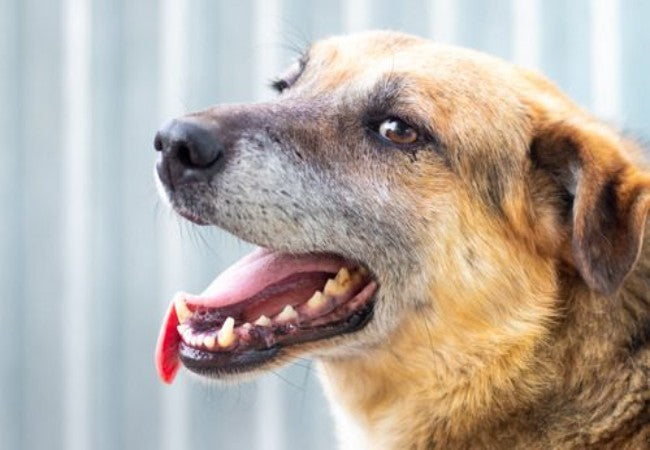Noisy Breathing in Dogs – Vet Guide 2025 🐶👃🩺

In this article
Noisy Breathing in Dogs – Vet Guide 2025 🐶👃🩺
By Dr. Duncan Houston BVSc
Hello, I’m Dr Duncan Houston, BVSc, founder of Ask A Vet. When your dog’s breathing sounds loud, rasping, or high-pitched, it often signals narrowed airways or health issues. This full-length 2025 guide explains types of breathing noises, their causes—ranging from breed traits to life‑threatening conditions—how we diagnose them, treatment options including surgery, and practical home care to support your dog’s comfort. Let’s help your dog breathe easy again. 🌬️🐾
📚 Understanding Stertor & Stridor
Breathing noises in dogs fall into two major categories:
- Stertor: low‑pitched, snore‑like sounds during inhalation caused by relaxed/floppy tissue or fluid vibration in the throat .
- Stridor: high‑pitched, wheezing gasps from rigid airway walls—seen in nasal, laryngeal, or upper tracheal obstructions .
Both are signs that something inside the upper respiratory tract (nose, pharynx, larynx, trachea) needs attention .
🐶 Why Dogs Breathe Noisily: Key Causes
- Brachycephalic airway syndrome in flat-faced breeds (pugs, bulldogs) stems from elongated palate, stenotic nostrils, everted saccules and often causes both stertor + stridor .
- Laryngeal paralysis typically affects older, large breeds (Labs, Newfs), causing hoarse bark, inspiratory stridor, exercise intolerance, and heat sensitivity .
- Tracheal collapse/stenosis presents as a harsh, honking cough or stridor in small dogs during excitement or heat .
- Nasopharyngeal issues: polyps, tumors, granulomas, foreign bodies or stenosis causing stertor .
- Infections: kennel cough, pneumonia and sinusitis cause fluid, swelling, and stertor/wheezing .
- Heart & lung disease: congestive heart failure or fluid in the lungs leads to labored, noisy breathing especially at rest .
- Trauma or tumors: swelling, hematomas, or masses near the airway produce stertor/stridor .
- Anxiety or obesity: the upper airway soft‑tissue vibrates more easily, especially during sleep, when overweight or stressed .
🚨 When Noisy Breathing Is Urgent
If your dog shows:
- Rapid breathing >30 breaths/min at rest
- Labored or abdominal breathing
- Cyanotic (blue) gums or collapse
Call your vet or go to emergency room immediately—this may indicate respiratory failure or heart distress .
🔍 Diagnosing the Cause
- History & physical exam: observe sounds, note if it’s stertor or stridor, assess general health.
- Check breathing rate/effort: use a calm environment; >30/min is concerning .
- Upper airway exam: laryngeal function under light sedation, oral & nasal inspection .
- Imaging: chest x‑rays (parenchyma, heart size), neck radiographs, CT/MRI for masses or narrowings .
- Endoscopy or rhinoscopy: visualize inside airway, collect biopsies or remove foreign bodies.
- Laboratory testing: bloodwork, heart function tests if cardiac cause is suspected.
💉 Treatment Options
- Medical therapy: steroids, antihistamines, antibiotics for infections; diuretics/ACE inhibitors for heart disease; cough suppressants .
- Weight loss & lifestyle changes: reduce obesity, avoid heat and stress, use front‑clip harnesses .
-
Surgical fixes:
- Brachycephalic syndrome: widen nostrils, resect soft palate, remove saccules .
- Laryngeal paralysis: tie‑back surgery to open airway .
- Tracheal collapse: place stents or rings to support the airway .
- Mass removal: surgery for polyps or tumors obstructing breathing .
- Emergency care: oxygen therapy, sedation, cold pack, fluid removal (thoracocentesis) if needed .
- Supportive rehab: avoid excitement/exertion, maintain a calm environment during recovery.
🏡 Home Environment & Care Tips
- Use non‑slip mats and keep your dog cool in heat.
- Elevate food/water bowls to ease swallowing & breathing.
- Monitor resting breathing rate weekly—count for 15 s ×4.
- Use front‑clip harnesses to reduce neck pressure.
- Humidify dry air to ease stertor or nasal irritation .
- Keep weight in a healthy range to reduce airway load .
✨ Key Takeaways
- Noisy breathing—stertor (low snore) and stridor (high wheeze)—signals upper airway narrowing, not normal in most dogs.
- Causes include anatomical, inflammatory, infectious, neoplastic, cardiac, traumatic, or breed‑specific syndromes.
- Emergency signs include fast breathing at rest, labored effort, cyanosis, and collapse—seek immediate veterinary attention.
- Proper diagnosis involves physical exam, imaging, airway visualization, and lab tests.
- Treatments range from medication and lifestyle support to surgery tailored to the underlying condition.
- Home support—cool environment, elevated bowls, harnesses, humidity—greatly improves comfort.
- With vigilance and comprehensive care, many dogs can breathe easier and enjoy a better quality of life. 🐾❤️
If your dog’s breathing sounds unusual—raspy, snoring, wheezing, or strained—don’t wait. Consult your veterinarian or reach out to Ask A Vet today. Early action ensures better outcomes and a happier, healthier pet. 🩺






